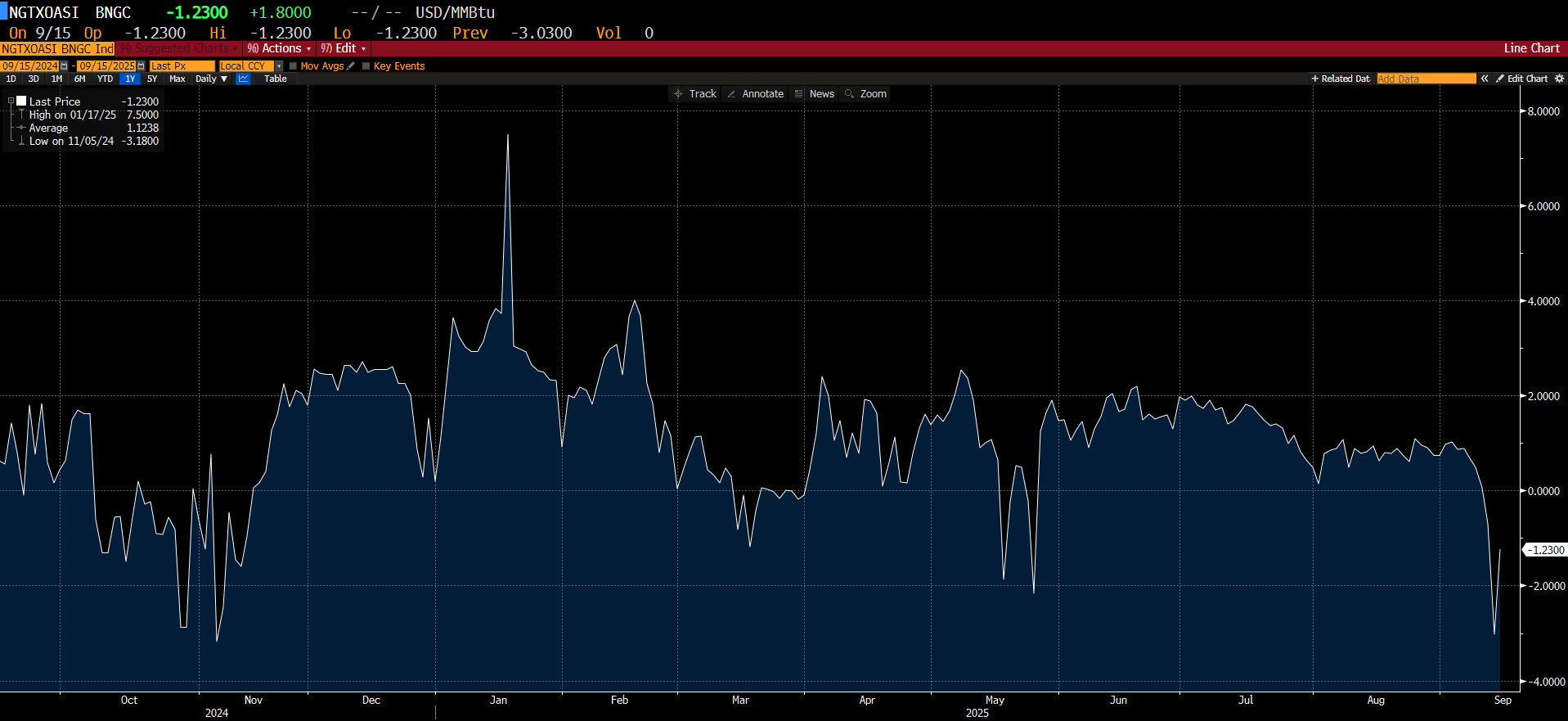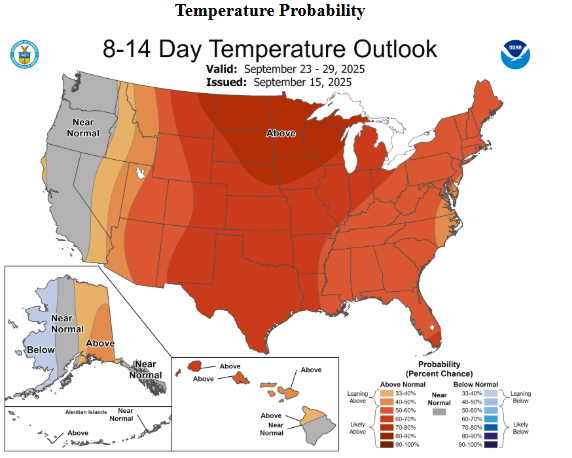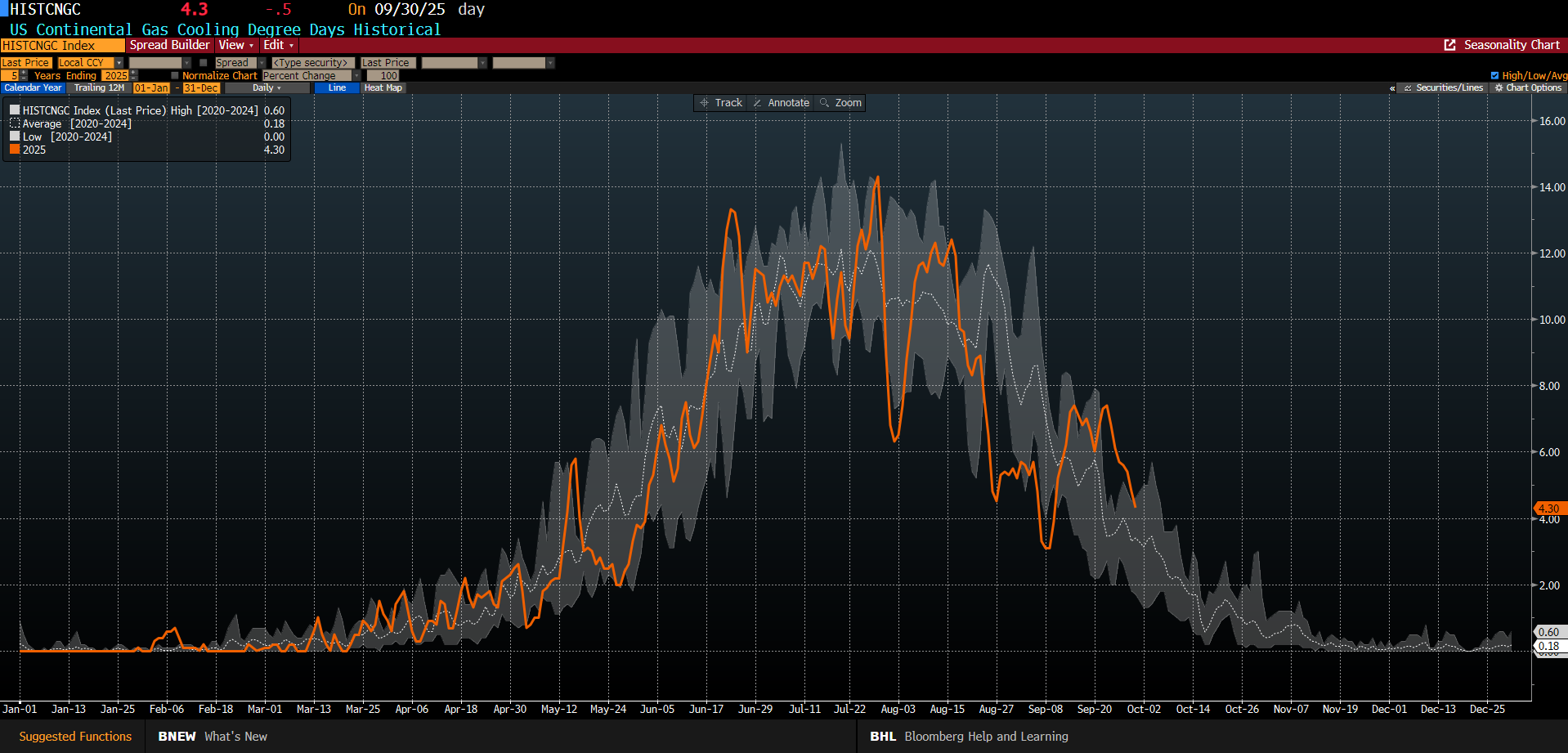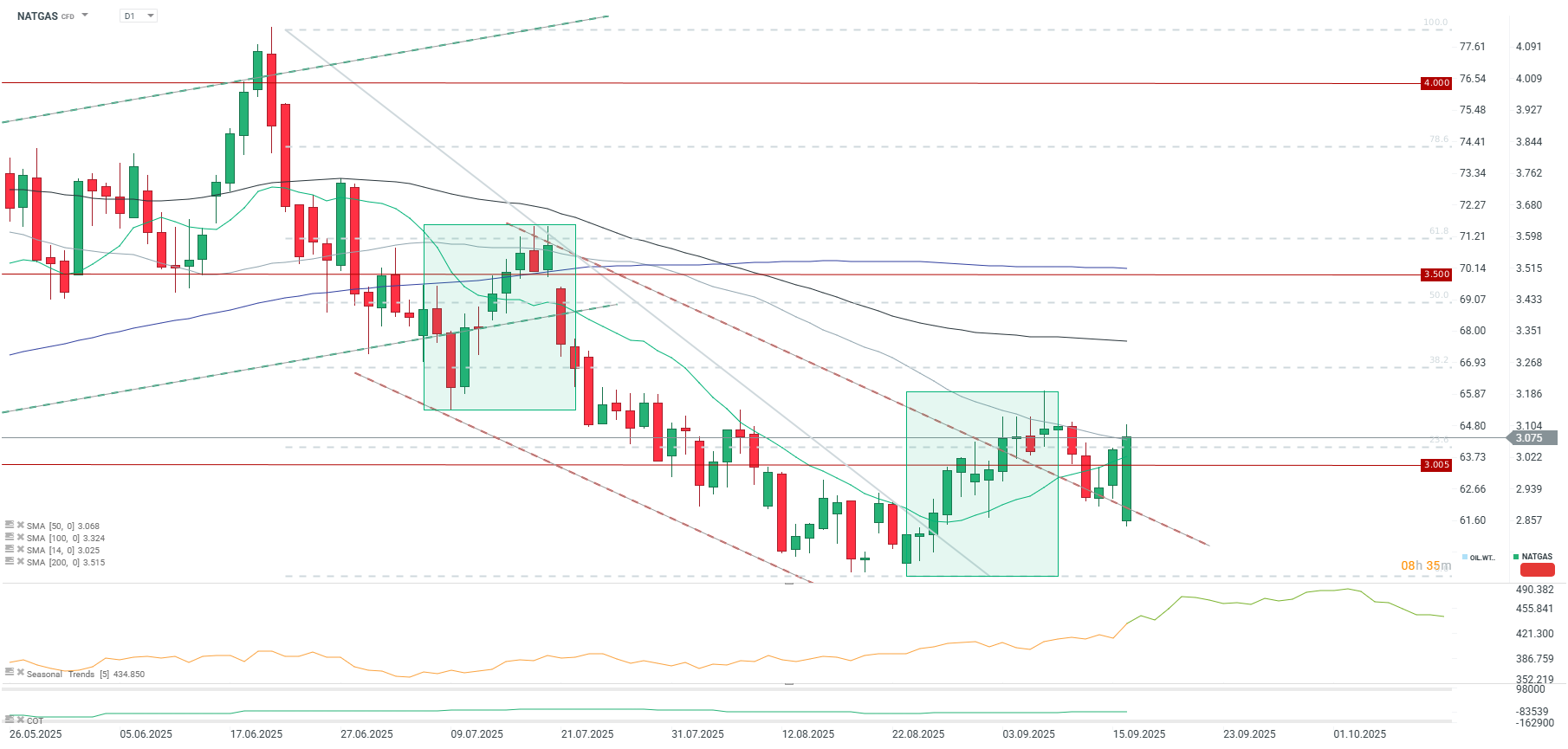Overproduction and Weather Drive Extreme Volatility in Natgas (from -5% to +1% on daily basis)
Today’s volatility in US natural gas markets appears highly perplexing. Following yesterday’s strong price rally, the market opened below $2.9, but quickly recovered above $3.0, once again breaching its 50-period moving average. The recent price increases have been driven by concerns over heightened demand due to anticipated "heat waves," yet prices opened lower today amid confusion surrounding the US pipeline system and overproduction. What is happening in the US gas market?
Negative Prices in Texas
Natural gas prices at the West Texas Waha Hub have plunged into negative territory, reaching as low as -$3.00/MMBtu, the lowest level in 14 months. This situation is the result of significant local oversupply and constraints on pipeline capacity. Negative pricing means that producers are paying consumers to take the gas, as they lack sufficient storage options. They prefer to pay for its removal rather than process it or resort to flaring. Kinder Morgan is currently conducting maintenance on several pipelines, which is preventing gas from being transported from the Permian Basin to key demand centres in the Gulf Coast and California. The Permian region is currently experiencing a strong overproduction that cannot be absorbed by the existing transmission infrastructure. The Henry Hub price reacted to the negative prices in the Waha Hub due to partial arbitrage, but quickly resumed its upward trend, given the reduced availability of gas from Texas and the increasing likelihood of a demand rebound in the coming weeks.
Start investing today or test a free demo
Create account Try a demo Download mobile app Download mobile app Waha Hub prices fell below -$3.00/MMBtu. Source: Bloomberg Finance LP, XTB
Waha Hub prices fell below -$3.00/MMBtu. Source: Bloomberg Finance LP, XTB
Weather Points to a Possible Demand Rebound
We are currently in a transitional period, between demand for cooling and demand for heating. Nevertheless, gas consumption for cooling has recently seen an uptick, which is also delaying the start of the heating season. However, prices are reacting primarily to the former factor. On Monday, gas production reached 108.7 bcfd, a 7% increase year-on-year, while demand was 71.8 bcfd, up 2.0% year-on-year. Last week, the EIA raised its forecast for average US production to 106.63 bcfd.

US temperatures are once again expected to be above normal. Source: Bloomberg Finance LP, XTB
Start investing today or test a free demo
Create account Try a demo Download mobile app Download mobile app Cooling degree days have recently rebounded significantly and stay above 5-year average, but the overall trajectory remains downward. Source: Bloomberg Finance LP, XTB
Cooling degree days have recently rebounded significantly and stay above 5-year average, but the overall trajectory remains downward. Source: Bloomberg Finance LP, XTB
Price at a Key Technical Point
The price surged yesterday to around $3.00/MMBtu, and today it is breaking through the 50-period moving average, also returning above the 23.6% retracement of the last downward wave. If the price remains above this level during today's session, it could attempt to test the $3.1-$3.2/MMBtu range. However, if it closes below, downward pressure could re-emerge, particularly ahead of Thursday’s inventory report, which is expected to show another strong build that could bring inventory levels closer to last year's. Current inventories are only 1.3% lower than a year ago.

The material on this page does not constitute as financial advice and does not take into account your level of understanding, investment objectives, financial situation or any other particular needs.
All the information provided, including opinions, market research, mathematical results and technical analyses published on the website or transmitted to you by other means is provided for information purposes only and should in no event be interpreted as an offer of, or solicitation for, a transaction in any financial instrument, nor should the information provided be construed as advice of legal or fiscal nature.
Any investment decisions you make shall be based exclusively on your level of understanding, investment objectives, financial situation or any other particular needs. Any decision to act on information published on the website or transmitted to you by other means is entirely at your own risk. You are solely responsible for such decisions.
If you are in doubt or are not sure that you understand a particular product, instrument, service, or transaction, you should seek professional or legal advice before trading.
Investing in OTC Derivatives carries a high degree of risk, as they are leveraged based products and often small movements in the market could lead to much larger movements in the value of your investment and this could work against you or for you. Please ensure that you fully understand the risks involved, taking into account your investments objectives and level of experience, before trading, and if necessary, seek independent advice.

